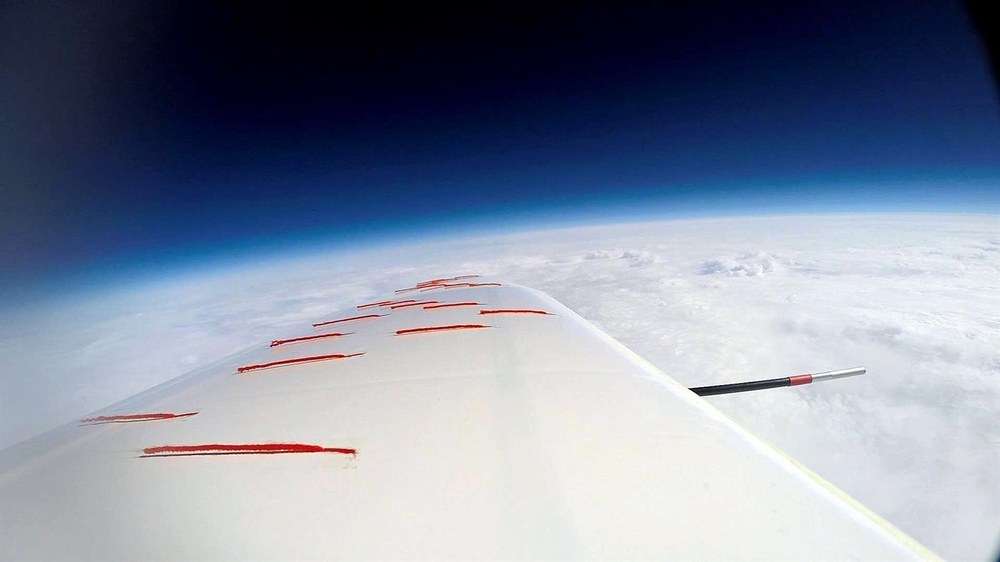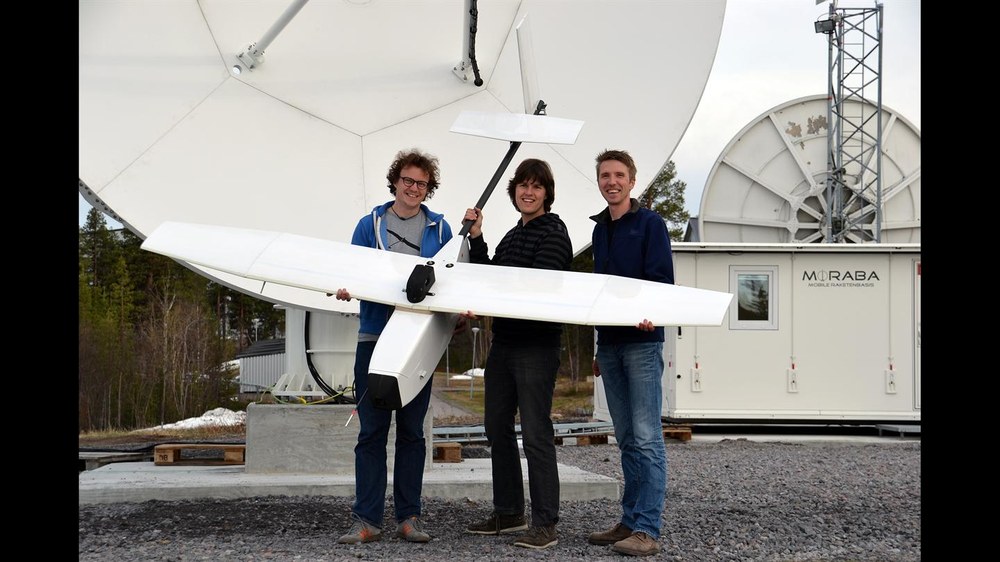HABLEG

The group Flying Robots at the DLR Institute of Robotics and Mechatronics in Oberpfaffenhofen conducts research on solar powered high altitude aircrafts. Due to the high altitude and the almost infinite mission duration, these platforms are also denoted as High Altitude Pseudo-Satellites (HAPS) or High Altitude Platforms (HAP).
technical data
Wingspan: | 3 m |
Mass: | 7.4 kg |
Launch Altitude: | 20 km |
Distance at Launch: | 68 km |
Total Mission Duration: | > 3 h |

System Description
HABLEG is an unmanned aircraft and is launched as a glider from a high altitude balloon in 20 km altitude to investigate technologies for future large HAP.
The aerodynamic requirements for high altitude flight included the development of a launch method allowing for a safe transition to horizontal flight from free-fall with low control authority. Due to the harsh environmental conditions in the stratosphere, the integration of electronic components in the airframe is a also a central aspect.
For regulatory reasons a reliable and situation dependent flight termination system had to be implemented.
In May 2015 a flight campaign was conducted. The mission was a full success, demonstrating that stratospheric research flights are feasible with rather small aircrafts.
The goal now is to extend the capabilities of small unmanned platforms for stratospheric research applications. These considerations are incorporated into the development of ELAHA (Elastic Aircraft for High Altitudes).



